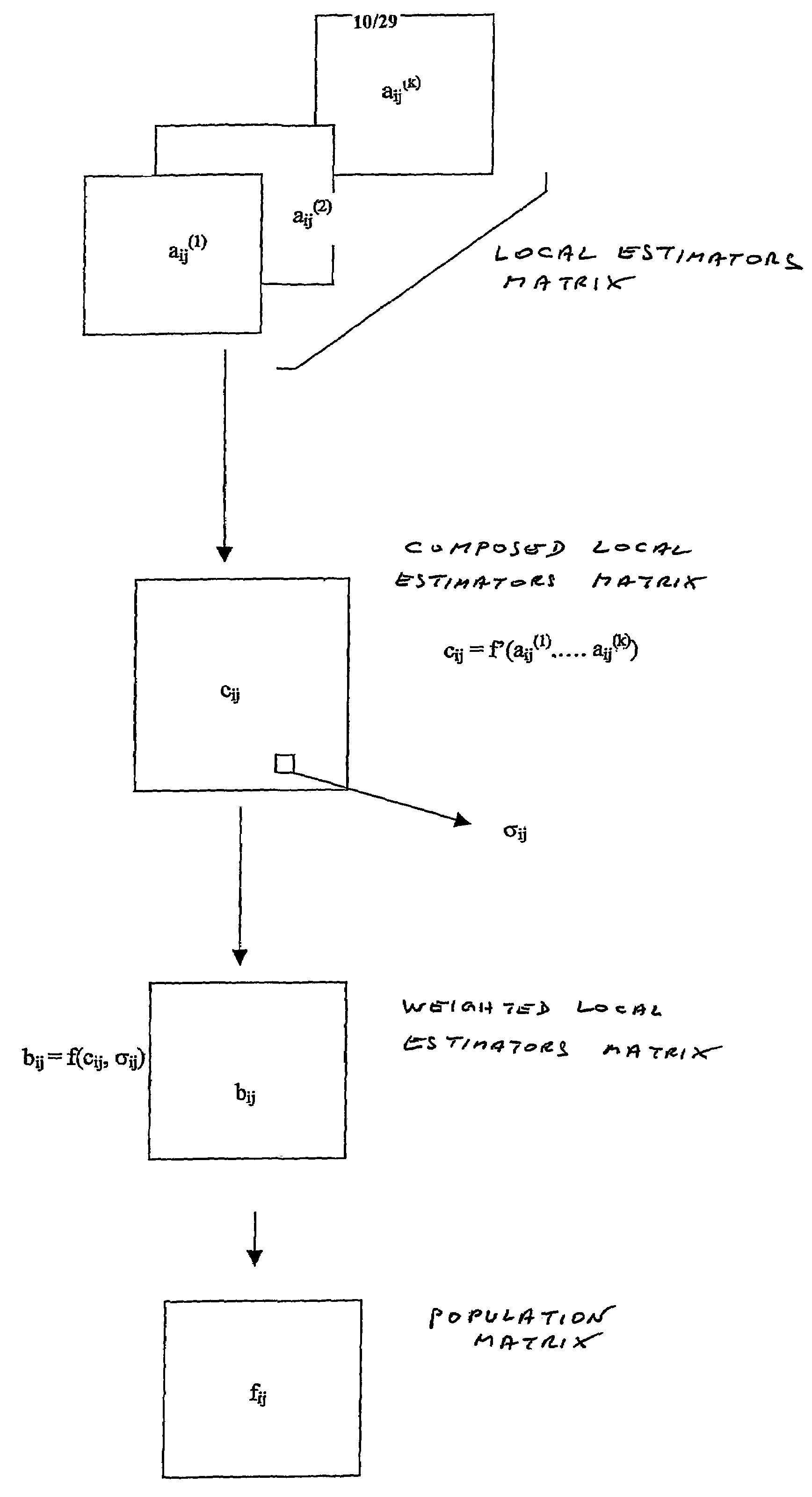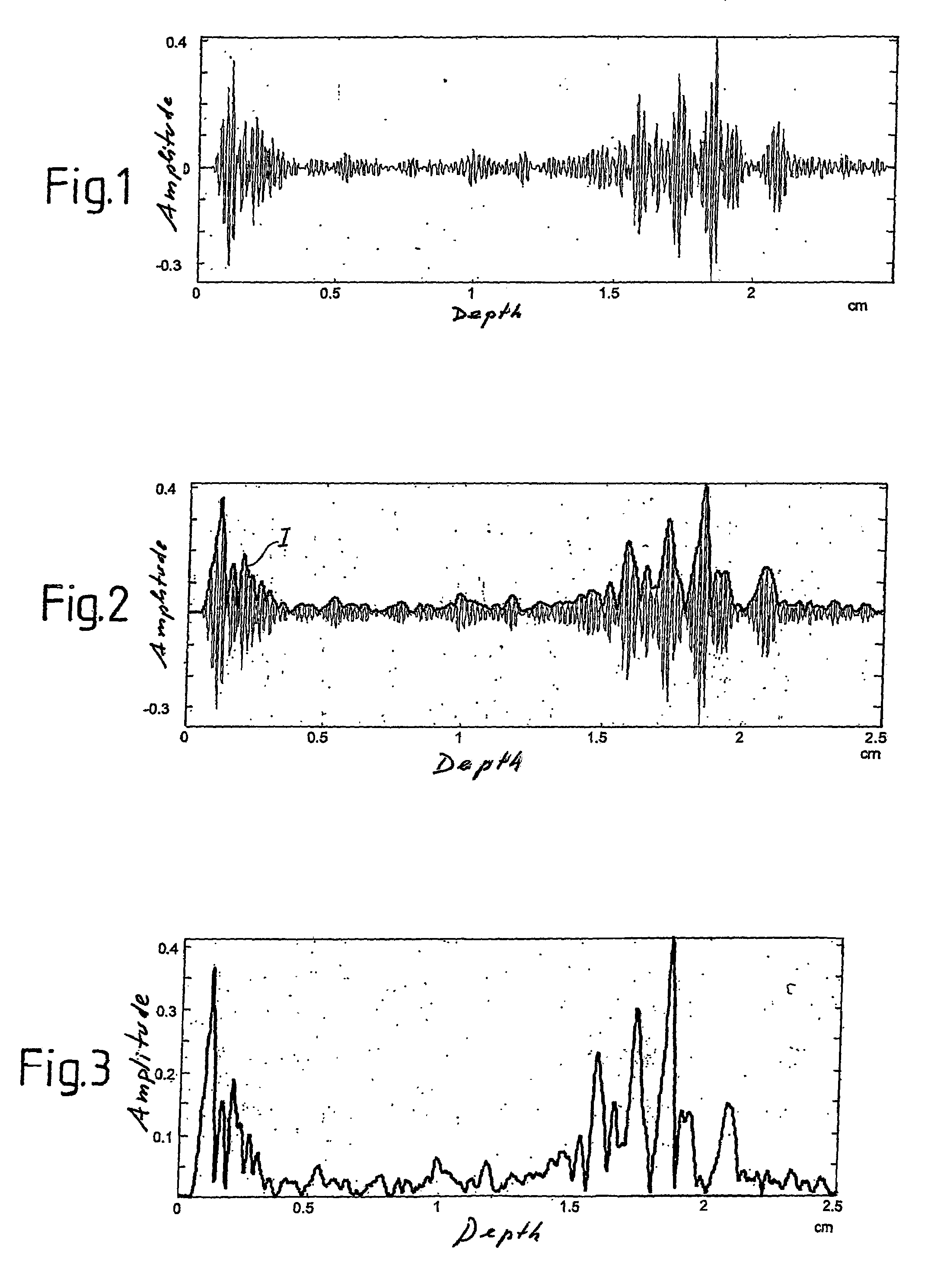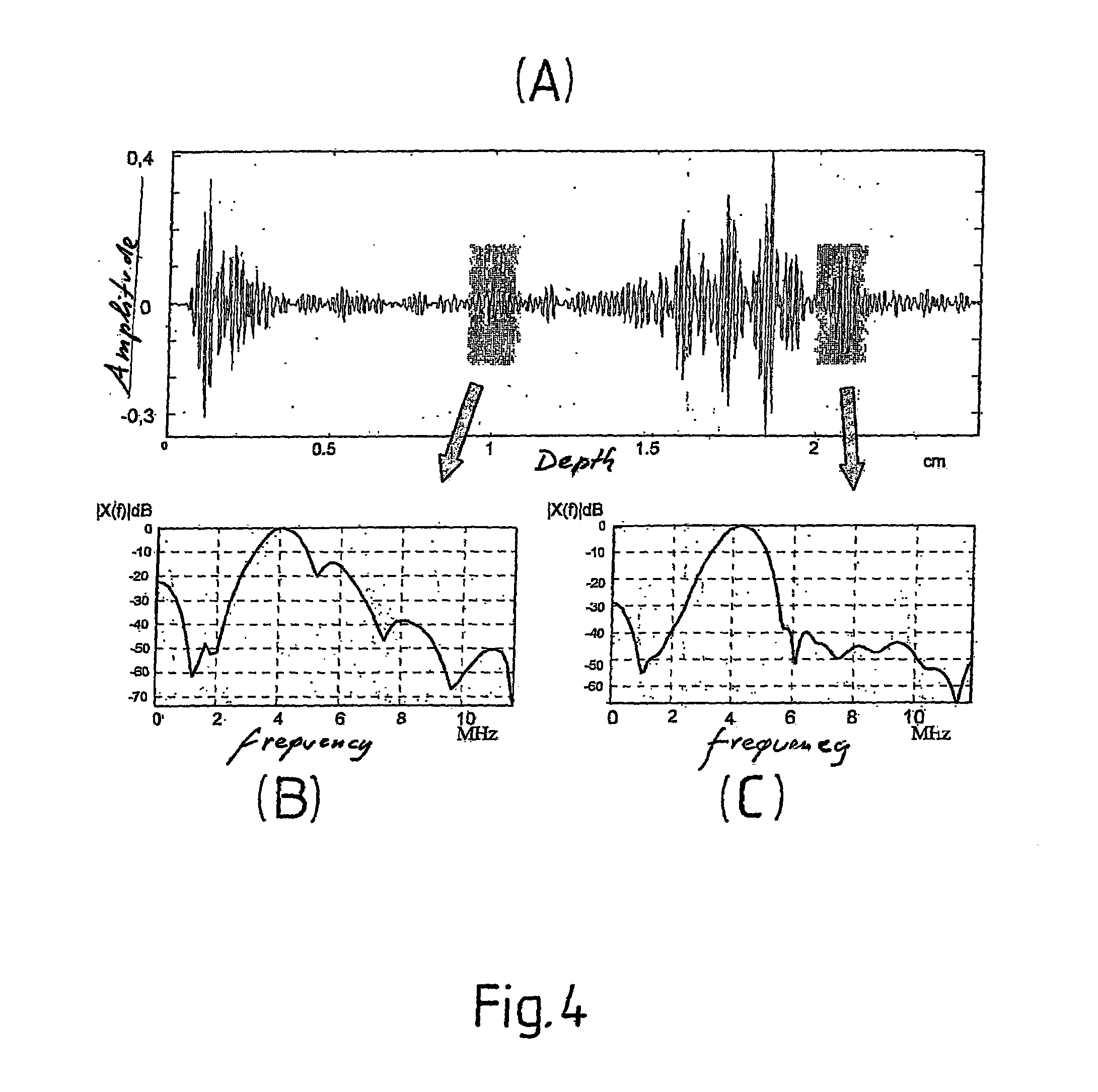Method and device for local spectral analysis of an ultrasonic signal
a local spectral analysis and ultrasonic signal technology, applied in the direction of analyzing solids using sonic/ultrasonic/infrasonic waves, using reradiation, processing detected response signals, etc., can solve the problems of inability to obtain reliable diagnosis, extremely complex signals, limited conventional methods, etc., to achieve greater and more precise information on the structure under examination
- Summary
- Abstract
- Description
- Claims
- Application Information
AI Technical Summary
Benefits of technology
Problems solved by technology
Method used
Image
Examples
Embodiment Construction
[0081]FIG. 5 shows a highly schematic block diagram of an ultrasound scanning apparatus. The number 1 indicates a transducer of the scanning head, indicated generically with 2, which emits the ultrasonic excitation signal and receives the ultrasonic response signal. The analog output 3 of the scanning head is connected to an acquisition card 5. The latter produces a sampled and digitized radio frequency signal, which forms the input for a bank of integrated FIR filters, indicated generically with 7. The bank of filters 7 can consist of any commercially available integrated device, for example the 43168 circuit produced by Harris, the GF191 circuit produced by Gennum, the GEC 16256 circuit produced by Plessey, or the GC2011 circuit produced by Graychip. The FIR filter 7 is associated with a digital signal processor (DSP) indicated with 9, which acts as a controller for the whole processing unit. The microcontroller 9 can be, for example, a TMS 32031 DSP produced by Texas (USA) or ano...
PUM
| Property | Measurement | Unit |
|---|---|---|
| frequency | aaaaa | aaaaa |
| frequency | aaaaa | aaaaa |
| frequency | aaaaa | aaaaa |
Abstract
Description
Claims
Application Information
 Login to View More
Login to View More - R&D
- Intellectual Property
- Life Sciences
- Materials
- Tech Scout
- Unparalleled Data Quality
- Higher Quality Content
- 60% Fewer Hallucinations
Browse by: Latest US Patents, China's latest patents, Technical Efficacy Thesaurus, Application Domain, Technology Topic, Popular Technical Reports.
© 2025 PatSnap. All rights reserved.Legal|Privacy policy|Modern Slavery Act Transparency Statement|Sitemap|About US| Contact US: help@patsnap.com



